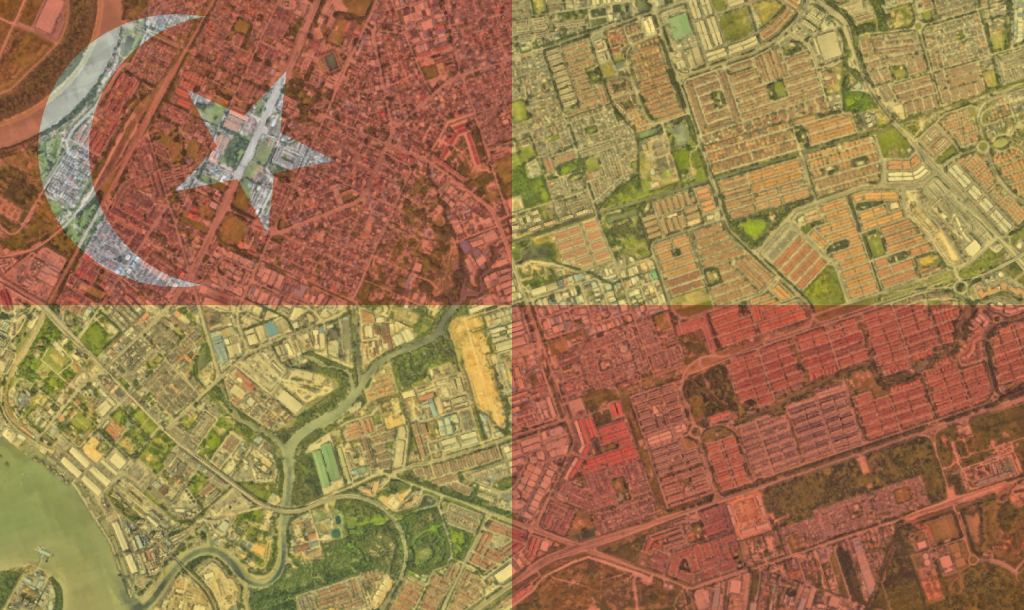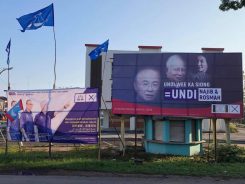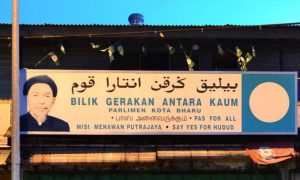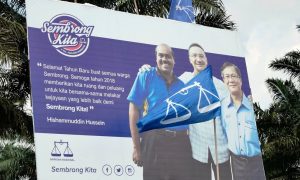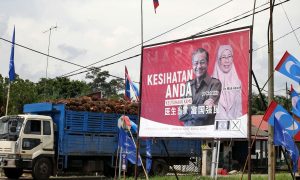With almost a half of Malaysia’s economy being driven in the Klang Valley (i.e. the state of Selangor and the Kuala Lumpur Federal Territory) what happens in Selangor effects the whole country. The knife-edge electoral contest underway there makes GE14 a killer election for BN.
Selangor, the richest state in Malaysia, is seen as Pakatan Harapan’s gateway to national success. A victory there would maintain long-term shifts in voter thinking federally. Selangor has 22 federal parliamentary seats from the 222 contested—the fifth highest number of federal seats of all states despite being the most populous of all of them. More attention, though, is on the contest for 56 state assembly seats which will determine if Pakatan gets to continue its rule there for the eleventh year in a row. In the 2004 elections, BN won 54 seats, or every seat except two. At that time, the then BN chief minister Khir Toyo was speaking of eradicating any opposition altogether from the Selangor assembly. In 2008, the 12th General Election, Pakatan shocked Barisan Nasional (BN) by winning 36 seats, allowing it to name its first chief minister, Khalid Ibrahim.
The ability to win Selangor lent massive weight to the opposition. Its success in retaining the state in 2013 with a higher seat count (44) matured support for Pakatan and relegated BN to an also-ran. A third win this week, and Selangor will be the launchpad for the next general election to win federal power. A Pakatan Selangor win means the long-term momentum of the coalition is retained. If, however, BN wins GE14 and controls Parliament, a Selangor win would be a bonus that decimates the opposition ranks for two more election cycles. BN would set itself up for another decade of consolidation.
Regional breakdown
(Here I use old state seat names, despite the Election Commission’s re-delineation, which included changing seat names. As most dated information is tied to the old names, the references below will be the old names even in the case of changes.)
In the 13th General Election, when PAS was still in Pakatan, there were two rebel candidates. As Parti Sosialis Malaysia (PSM) remained an ally of Pakatan throughout 2008-2013, it contested Kota Damansara and Semenyih. Accounts differ, but PAS-aligned candidates contested in those seats as well, to generate at least three-way BN-PSM-PAS fights. The Pakatan leadership was furious, but PAS feigned ignorance. With a PAS candidate on the ballot, PSM lost both seats.
With PAS vying in Selangor against both their previous partners in Pakatan and BN in GE14, the outcome is unclear. The three-way fights might bloody PAS’ previous partners and benefit BN enough to win the election.
A result below the 44 seat won as a coalition including PAS in 2013 is seriously unlikely, but the larger question is: will it be lower than the 36 in 2008? 29 seats are required for a win. Where does Pakatan aim to collect them from?
Selangor is located in the middle of the Malay Peninsula, with the Straits of Malacca to the west and hemmed in by the Titiwangsa mountain rage on the east.
To begin with, there’s the BN stronghold of the north-east. It’s the state’s rice bowl, and of the 13 state seats there, BN nabbed 9—i.e. three-fourths of their 2013 haul. This is where the right-wing “Red Shirts” leader Jamil Yunos operates from. He currently heads an aggressive campaign for all BN candidates. While Pakatan seats Sekinchan and Kuala Kubu Baharu are both in firm footing under Lim Suee Lim and Lee Kee Hiong respectively, the two seats of Sabak (PAS) and Ijok (PKR) are at risk of being lost to BN.
Below the rice bowl region is the Selayang-Gombak-Ampang grid with 9 seats. All of these 9 were won by Pakatan last time around—but five of them were won by PAS. I can see PAS keeping up to 3 seats and BN gaining a couple. The vulnerable seats would be Batu Caves, Gombak Setia, Lembah Jaya and Taman Templer. Chief Minister Azmin Ali’s seats is in the area, as is that of his trusted lieutenant and PKR women’s wing chief Zuraida Kamaruddin, so expect strong stumping all the way till election day eve.
The mid-south-east zone has 8 seats, all Pakatan except for Semenyih. BN may add to the single count with Seri Serdang, Bangi (renamed Sungai Ramal) or even Dusun Tua. The most predictable is the Petaling Jaya-Subang Jaya-Damansara area with 9. BN may defend its solitary Kota Damansara and hope to snatch Taman Medan or Paya Jaras. The Bukit Lanjan, Subang Jaya, Bukit Gasing, Bandar Utama and Kampung Tunku are foregone conclusions, and are now Pakatan strongholds.
Which brings us to the key battleground of the east coast stretch down to the south, including the south-east. There are 17 seats in play, with Pakatan winning all but Dengkil. This time it will be neck and neck in many seats and Pakatan may end up with as much as 12. Selat Klang, Pelabuhan Klang, Kota Anggerik, Sementa and Morib are vulnerable, but with PAS as an opponent many results may come down to fence-sitting voters. This is the crunch for the election.
| Selangor’s 56 state assembly seats by regions | ||||
| Areas | Number of seats and 2013 results | 2018 predictions | ||
| Pakatan | BN | PAS | ||
| North-East | 13 (Pakatan 4, BN 9) | 2 | 11 | 0 |
| Selayang-Gombak-Ampang | 9 (Pakatan all) | 4 | 2 | 3 |
| Mid-south-east | 8 (Pakatan 7, BN 1) | 5 | 3 | 0 |
| Petaling Jaya-Subang Jaya-Damansara | 9 (Pakatan 8, BN1) | 8 | 1 | |
| East coast-south | 17 (Pakatan 16, BN 1) | 12 | 5 | |
| Total (*29 is simple majority) | 31 | 22 | 3 | |
The PAS factor
The PAS effect in Selangor will be determined by how important the administration of the state has been. There is a consensus that things have improved, but will that outweigh the absence of PAS on the ticket? Will those partial to PAS, having voted for this government twice on the basis of their party affiliation, be impressed by Pakatan’s governing record to cross the line, supporting track record over partisanship? It’s a matter of whether PAS only gathers less than 5% of the vote per seat, or as high as 20%, which would undermine Pakatan’s chances.
PKR mindgames
Chief Minister Azmin always plays up the size of support programmes already implemented. But at the back of his mind he may wonder if he will be the chief minister to administer future spending. There was a furore over the Selangor candidate list for PKR altered late by “interested persons” inside the top leadership. Murmurs are that de facto leader Anwar Ibrahim has been playing a hidden hand in the selections, with Shaharuddin Badaruddin, a presumed Anwar choice as Azmin’s replacement, standing in the safe seat of Seri Setia.
Playing the China card is unlikely to save the MCA
Barisan Nasional's Chinese component parties face a do-or-die contest this GE14. Selling themselves as conduits for investment from China isn't working.
Seat and logo confusions
Two things have changed. One, while most seats have had voters being shifted in and out by redeliniation, the decision to change some seat names may confuse voters. Equally confusing might be the decision for Pakatan to use only the PKR logo. While the seat name confusion is easier to clear up and of lower consideration, the logos have history. For example, DAP has incurred the wrath of long time supporters for discarding its rocket symbol in GE14.
Overall
There is a certain state identity for Selangor, in that locals can distinguish the national issues and those important to Selangor residents. This is why fanfare over the appointment of ex-prime minister Mahathir Mohamad as Pakatan’s choice to lead the nation has been muted in Selangor. It is not that Selangor does not care for Mahathir, but the politics in the state have matured to a point that local issues will determine who wins. The federal cause is separate in the minds of voters here, and in a couple of days time, close as it may be, Pakatan will continue to govern the state.
 Facebook
Facebook  Twitter
Twitter  Soundcloud
Soundcloud  Youtube
Youtube  Rss
Rss 